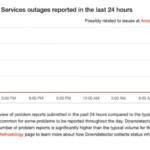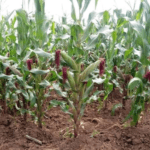Did you know that you can learn Python programming by starting with the basic syntax and gradually building your skills to become an advanced programmer? Below, you’ll find an explanation of key relationships in programming, including aggregation, composition, and association
RELATIONSHIP IN OOP (Composition, Aggregation, Association)
In Object-Oriented Programming (OOP), relationships among classes are crucial for building flexible, reusable, and well-structured systems. Three primary types of relationships define how objects and classes interact: Association, Aggregation, and Composition. Let’s explore each in detail.
1. Association
Association is a broad term that describes any relationship between two or more classes. It indicates that objects of one class are related to objects of another, but neither class owns the other. It’s essentially a “uses-a” or “has-a” relationship, meaning that objects can be linked without any lifecycle dependency.
- Example: A Teacher and Student classes might be associated since a teacher teaches students. Neither class is responsible for creating or destroying the other.
- Types of Association:
- Unidirectional: One class is aware of the other, but not vice versa. For example, a Teacher may know about a Student, but the Student may not directly know about the Teacher.
- Bidirectional: Both classes are aware of each other. For instance, both Teacher and Student know about each other in a teaching system.
class Teacher:
def __init__(self, name):
self.name = name
def teach(self):
print(f”{self.name} is teaching.”)
class Student:
def __init__(self, name):
self.name = name
def learn(self):
print(f”{self.name} is learning.”)
# Creating instances
teacher = Teacher(“Mr. Smith”)
student = Student(“Alice”)
# Association: The teacher and student can interact with each other
teacher.teach()
student.learn()
Explanation:
- The
TeacherandStudentobjects are related, but they are independent of each other. - The
Teacherdoesn’t “own” or “manage” theStudentobject, and vice versa.
Read Also: How to Optimize AdSense Click Tracking On the Website
2. Aggregation
Aggregation is a specialized form of association representing a “whole-part” relationship. The key feature of aggregation is that the “whole” and the “part” can exist independently. This is known as a weak relationship since the lifecycle of parts does not depend on the lifecycle of the whole.
- Example: A Library and Book represent an aggregation relationship. If a library is closed, the books still exist independently; they could belong to other libraries or individual people.
- Characteristics:
- Aggregation implies a “has-a” relationship but with the flexibility of independence.
- The parts (like Book in the example) are not strongly tied to the lifecycle of the aggregate (Library).
- Represented in UML with a hollow diamond on the side of the class that represents the “whole.”
class Department:
def __init__(self, name):
self.name = name
self.teachers = [] # Aggregating Teacher objects
def add_teacher(self, teacher):
self.teachers.append(teacher)
def list_teachers(self):
for teacher in self.teachers:
print(teacher.name)
class Teacher:
def __init__(self, name):
self.name = name
# Creating instances
teacher1 = Teacher(“Mr. Smith”)
teacher2 = Teacher(“Ms. Johnson”)
department = Department(“Math Department”)
# Aggregation: A department can contain teachers
department.add_teacher(teacher1)
department.add_teacher(teacher2)
department.list_teachers()
Explanation:
- The
Departmentclass aggregatesTeacherobjects. - If a
Departmentobject is destroyed, theTeacherobjects still exist independently.
3. Composition
Composition is a stronger form of association representing an even more tightly coupled “whole-part” relationship. In this relationship, the lifecycle of the part depends on the lifecycle of the whole. When the “whole” is destroyed, all of its parts are also destroyed.
- Example: A House and Room relationship represents composition. Rooms cannot exist independently without a house; when a house is destroyed, the rooms are as well.
- Characteristics:
- Composition implies a “has-a” relationship with a strong dependency.
- The parts are exclusively owned by the whole and cannot exist independently.
- Represented in UML with a filled diamond on the side of the class that represents the “whole.”
class Engine:
def __init__(self):
print(“Engine created”)
def start(self):
print(“Engine started”)
class Car:
def __init__(self, make):
self.make = make
self.engine = Engine() # Car “has-a” Engine (composition)
def drive(self):
self.engine.start() # The car needs the engine to drive
print(f”{self.make} is driving.”)
# Creating a Car object
my_car = Car(“Toyota”)
my_car.drive()
Explanation:
- The
Carclass “owns” theEngineobject. - If the
Carobject is destroyed, theEngineobject will also be destroyed. - The
Enginecannot exist without theCarin this case, representing a strong “has-a” relationship.
Summary Table
| Relationship | Definition | Lifecycle Dependency | Example |
| Association | General relationship between classes | None | Teacher ↔ Student |
| Aggregation | Whole-part relationship | Parts are independent | Library ↔ Book |
| Composition | Whole-part relationship | Parts depend on the whole | House ↔ Room |
When to Use Each Relationship
- Association: Use association when objects need to interact but do not depend on each other’s lifecycle.
- Aggregation: Use aggregation when you want to model a “whole-part” relationship but with independent parts.
- Composition: Use composition when the parts cannot meaningfully exist without the whole.
These relationships enable effective class design, helping you decide how tightly or loosely coupled your objects should be, which affects reusability, testability, and maintainability.






